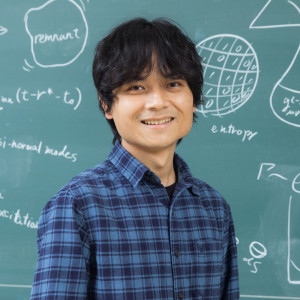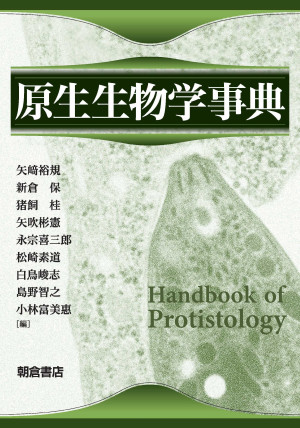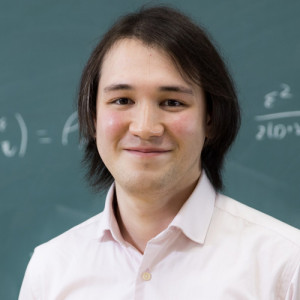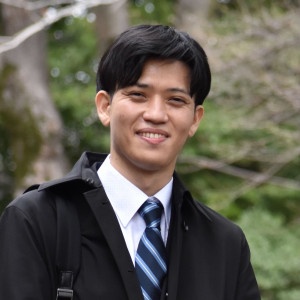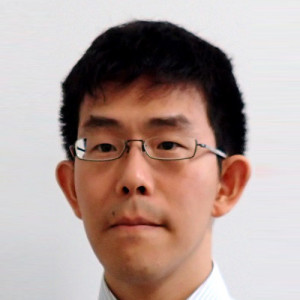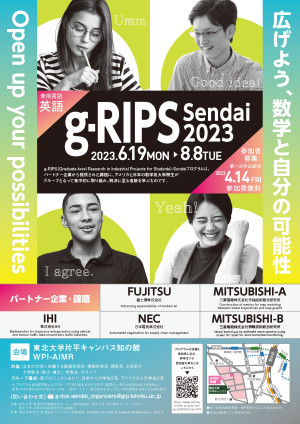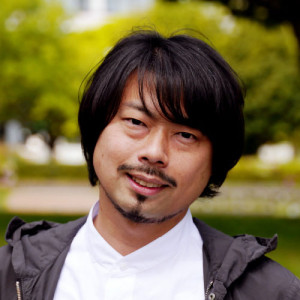Volume 250
Back to Newsletter List
Hot Topic
Probing Extreme Gravity with Ringing Black Holes
2023-05-08
Naritaka Oshita (Visiting Scientist, iTHEMS) contributed to the chapter “Researches” in the membership journal of the physical society of Japan on the universality in a black hole ringing and its application to probe the near-horizon physics of black holes.
Also, a picture relevant to Naritaka Oshita’s research on a black hole ringing was selected as the cover art of the journal.
You can visit the following web site of the Physical Society of Japan to access the contributions.
Book
Handbook of Protistology
2023-05-08
Editor: Euki Yazaki, et al.
Language: Japanese
Release date: May 10, 2023
This handbook covers a wide range of knowledge and the latest information on evolution, ecology, and the relationship between humans and various studies and new findings that have emerged from research on protists. The recent classification system is also organized. The contents include: What are protists? (cell structure, phylogeny and classification, macroevolution, symbiosis, ecology, model organisms) / Evolution and classification (Amoebozoa, Archaeplastida, Stramenopiles, Alveolata, and others) / Protist structure and ecology (life cycle, structure and function, symbiosis, genomics, environment and ecology, and interactions with humans) / Research methods.
Upcoming Events
Workshop
Co-hosted by iTHEMS
Exploring GPT’s Influence on Natural Science and Mathematics
May 17 (Wed) 10:00 - 15:00, 2023
We are organizing a workshop to explore the application of ChatGPT in natural sciences, with a focus on theoretical physics and mathematics. Advances in GPT-4 and plugin technology are expected to bring about transformative changes in the way research is conducted. We will investigate the potential for another shift in research methodology following the advent of computers. Expert-led lectures on large language models (LLMs/ChatGPT) will also be conducted. We aim to deepen the discussion on the effective utilization of LLMs as tools to support the research of physicists and mathematicians.
This workshop will be held in a hybrid format, combining online streaming with in-person presentations, to accommodate a larger number of participants. In addition to the lectures, short talks and discussions will be held entirely offline. The target audience is mainly students and researchers in the natural sciences, but please note that there will be a limit to the number of in-person attendees.
The aim of this event is to provide a forum for researchers to engage in earnest discussions. Those who do not align with the objectives of this workshop are kindly asked to refrain from participating.
We look forward to this opportunity to consider, together with all of you, new research methods and perspectives in the fields of theoretical physics and mathematics in the natural sciences, utilizing ChatGPT.
(The above text was created by modifying the text generated by Chat-GPT and GPT-4.)
All talks will be delivered in Japanese.
Venue: #435-437, 4F, Main Research Building, RIKEN Wako Campus / via Zoom
Event Official Language: Japanese
Seminar
iTHEMS Biology Seminar
Excursion Theory, Galton Watson Trees and their Scaling Limits
May 18 (Thu) 16:00 - 17:00, 2023
Christy Koji Kelly (Special Postdoctoral Researcher, RIKEN Interdisciplinary Theoretical and Mathematical Sciences Program (iTHEMS))
In this talk we aim to introduce a recent perspective in probability theory that views random trees as random excursions with additional data. This perspective is particular suited to the study of the scaling limit of tree-valued random processes. Excursion theory is a useful and relatively elementary tool allowing one to derive rather explicit information about the local and global geometry of the resultant continuum trees which in turn can be used to derive information about large random trees. We illustrate these ideas in the context of the Brownian continuum random tree, the scaling limit of critical Galton-Watson trees and a structure that arises naturally in various contexts in physics; in particular the Brownian continuum random tree is a pathological model of quantum spacetime. Despite the fundamentally mathematical nature of the talk, the aim is to keep the presentation essentially heuristic emphasising key intuitions over rigorous proof. The content itself should be relevant to biologists interested in the theory of branching processes or coalescent theory.
Venue: Seminar Room #359, 3F Main Research Building, RIKEN / via Zoom
Event Official Language: English
Seminar
ABBL-iTHEMS Joint Astro Seminar
X-ray study on the synchrotron emission in Kepler's SNR
May 19 (Fri) 14:00 - 15:15, 2023
Vincenzo Sapienza (Ph.D. Student, Department of Physics, Graduate School of Science, The University of Tokyo)
Synchrotron X-ray emission in young supernova remnants (SNRs) is a powerful diagnostic tool to study the population of high energy electrons accelerated at the shock front.
We performed a spatially resolved spectral analysis of the young Kepler's SNR, where we identify two different regimes of particle acceleration.
In the north, where the shock interacts with a dense circumstellar medium (CSM), we found a more efficient acceleration than in the south, where the shock velocity is higher and there are no signs of shock interaction with dense CSM.
We also studied the temporal evolution of the synchrotron flux, from 2006 to 2014.
A number of regions show a steady synchrotron flux and equal cooling and acceleration times.
However, we found some regions where we measured a significant decrease in flux from 2006 to 2014.
Our results display a coherent picture of the different regimes of electron acceleration observed in Kepler's SNR.
Also If I will have time during the seminar it will be nice to present also some preliminary results I will have in the SN 1987A project.
Venue: Seminar Room #359, 3F Main Research Building, RIKEN / via Zoom
Event Official Language: English
Seminar
iTHEMS Math Seminar
Hydrodynamic limit and the fluctuating hydrodynamics for large-scale interacting systems
May 24 (Wed) 14:00 - 16:30, 2023
Kohei Hayashi (Visiting Researcher, RIKEN Interdisciplinary Theoretical and Mathematical Sciences Program (iTHEMS))
In these decades, a great deal of works has been devoted to understand macroscopic phenomena, such as diffusion, aggregation or pattern formation, from the viewpoint of microscopic systems. Hydrodynamic limit, or fluctuating hydrodynamics, is a fundamental framework to explain the macroscopic behavior of physical quantities in mathematically rigorous ways from a system of the vast numbers of microscopic agents under random interactions, which system is called the large-scale interacting system. In this framework, our central aim is to derive partial differential equations (PDEs) which describe time evolution of some macroscopic quantities, starting from the large-scale interacting systems; hydrodynamic limit is a procedure to derive deterministic PDEs with help of the law of large numbers, whereas stochastic PDEs are derived under the scale of the central limit theorem by fluctuating hydrodynamics. In this talk, I would like to explain basic concepts of hydrodynamic limit and fluctuating hydrodynamics, through some simple models. In the first part, I will give a concise exposition on Markov processes as preliminaries and then state some results on scaling limits of simple exclusion processes as a pedagogical example. In the second part, I will talk about recent progress on universality which appears in fluctuating hydrodynamics. Especially, I would like to talk about the universality of the Kardar-Parisi-Zhang equation, and its mathematical background.
Venue: Seminar Room #359, 3F Main Research Building, RIKEN / via Zoom
Event Official Language: English
Seminar
iTHEMS Theoretical Physics Seminar
Spectral correlations and scrambling dynamics in Sachdev-Ye-Kitaev type models
May 30 (Tue) 13:30 - 15:00, 2023
Masaki Tezuka (Assistant Professor, Division of Physics and Astronomy, Graduate School of Science, Kyoto University)
Note: Due to unexpected trouble, we have made the decision to postpone the seminar scheduled for February 21 to May 30. Sorry for the trouble.
Abstract:
The Sachdev-Ye-Kitaev (SYK) model, proposed in 2015, is a quantum mechanical model of N Majorana or complex fermions with all-to-all random four-body interactions. The model has attracted significant attention over the years due to its features such as the existence of the large-N solution with maximally chaotic behavior at low temperatures and holographic correspondence to low-dimensional gravity.
The sparse version of the SYK model reproduces essential features of the original model for reduced numbers of disorder parameters. We recently proposed [1] a further simplification, where we set the nonzero couplings to be +1 or -1 rather than sampling from a continuous distribution such as Gaussian. This binary-coupling model exhibits strong correlations in the spectrum, as observed in the spectral form factor, more efficiently in terms of the number of nonzero terms than in the Gaussian distribution case. We also discuss the scrambling dynamics with the binary-coupling sparse SYK model, comparing the model with the original model as well as the SYK model with random two-body terms [2], where the localization of the many-body eigenstates in the Fock space has been quantitatively studied [3,4].
References
- Masaki Tezuka, Onur Oktay, Enrico Rinaldi, Masanori Hanada, and Franco Nori, Binary-coupling sparse Sachdev-Ye-Kitaev model: An improved model of quantum chaos and holography, Phys. Rev. B 107, L081103 (2023), doi: 10.1103/PhysRevB.107.L081103, arXiv: 2208.12098
- Antonio M. García-García, Bruno Loureiro, Aurelio Romero-Bermúdez, and Masaki Tezuka, Chaotic-Integrable Transition in the Sachdev-Ye-Kitaev Model, Phys. Rev. Lett. 120, 241603 (2018), doi: 10.1103/PhysRevLett.120.241603
- Felipe Monteiro, Tobias Micklitz, Masaki Tezuka, and Alexander Altland, Minimal model of many-body localization, Phys. Rev. Research 3, 013023 (2021), doi: 10.1103/PhysRevResearch.3.013023
- Felipe Monteiro, Masaki Tezuka, Alexander Altland, David A. Huse, and Tobias Micklitz, Quantum Ergodicity in the Many-Body Localization Problem, Phys. Rev. Lett. 127, 030601 (2021), doi: 10.1103/PhysRevLett.127.030601, arXiv: 2012.07884
Venue: Hybrid Format (3F #359 and Zoom), Main Research Building, RIKEN Wako Campus
Event Official Language: English
Workshop
iTHEMS Science Outreach Workshop 2023
June 16 (Fri) - 18 (Sun) 2023
This year's meeting on "Outreach of RIKEN iTHEMS 2023@Sendai&Zoom" will be held from FRI June 16 to SUN June 18, as a face-to-face meeting at TOKYO ELECTRON House of Creativity of Tohoku Forum for Creativity in cooperation with iTHEMS SUURI-COOL (Sendai) using ZOOM for the necessary part as well.
Venue: TOKYO ELECTRON House of Creativity, Katahira Campus, Tohoku University / via Zoom
Event Official Language: Japanese
School
Co-hosted by iTHEMS
g-RIPS-Sendai 2023
June 19 (Mon) - August 8 (Tue) 2023
The Research in Industrial Projects for Students (RIPS) program has been held at the Institute for Pure & Applied Mathematics (IPAM) of the University of California, Los Angeles. In 2018, the Advanced Institute for Materials Research (AIMR) at Tohoku University in Sendai launched the g-RIPS-Sendai program in collaboration with IPAM, targeting graduate-level students in mathematical science and related disciplines. Participants from the U.S. and Japan will work on cross-cultural teams on research projects designed by industrial partners. The projects are expected to be of great interest to the partners and offer stimulating challenges to students. For more information on this year's g-RIPS-Sendai 2023, please visit the program website at the related link.
Organizers:
Research Alliance Center for Mathematical Science (RACMaS), Tohoku University
Tohoku Forum for Creativity (TFC), Tohoku University
Advanced Institute for Materials Research (AIMR), Tohoku University
In cooperation with the following organizations:
RIKEN Interdisciplinary Theoretical and Mathematical Sciences Program (iTHEMS)
Institute for Pure & Applied Mathematics (IPAM), UCLA
Venue: Advanced Institute for Materials Research (AIMR), Tohoku University
Workshop
Supported by iTHEMS
6th Workshop on Virus Dynamics
July 4 (Tue) - 6 (Thu) 2023
Catherine Beauchemin (Deputy Program Director, RIKEN Interdisciplinary Theoretical and Mathematical Sciences Program (iTHEMS))
Shingo Iwami (Professor, Graduate School of Science, Nagoya University)
The Workshop on Virus Dynamics is an international meeting held every 2 years. It brings virologists, immunologists, and microbiologists together with mathematical and computational modellers, bioinformaticians, bioengineers, virophysicists, and systems biologists to discuss current approaches and challenges in modelling and analyzing different aspects of virus and immune system dynamics, and associated vaccines and therapeutics. This 6th version of the workshop builds on the success of previous ones held in Frankfurt (2013), Toronto (2015), Heidelberg (2017), Paris (2019) and virtually (2021). It is supported by the Interdisciplinary Theoretical and Mathematical Sciences (iTHEMS) program at RIKEN, by Nagoya University, and by the Japan Science and Technology Agency. Up-to-date information and registration is available via the website. The workshop is for in-person participation only (no virtual or hybrid option).
Venue: Noyori Conference Hall, Higashiyama Campus, Nagoya University
Event Official Language: English
Seminar
ABBL-iTHEMS Joint Astro Seminar
A dynamical model for IRAS 00500+6713: the remant of a type Iax supernova SN1181 hosting a double degenerate merger product WD J005311
July 7 (Fri) 14:00 - 15:15, 2023
Takatoshi Ko (Ph.D. Student, Research Center for the Early Universe (RESCEU), The University of Tokyo)
Iras 00500+6713 is a bright nebula in the infrared, and X-ray observations show it consists of diffuse region and strong illuminated central region. In addition, optical spectral observations have recently revealed that fast wind with about 15,000 km/s is blowing from the massive white dwarf at the center. The properties of this nebula and white dwarf are very similar to those theoretically predicted by the binary white dwarf merger. In addition, its position on the celestial sphere and the extent make it a prime candidate for the remnant of SN 1181, a historical supernova. In this study, we propose that such a multilayered structure is formed by the collision between the remnant of SN 1181 and the stellar wind blowing from the central white dwarf, and succeeded in constructing a model that is consistent with the multi-wavelength observations. The results show that the progenitor of SN 1181 is a binary white dwarf with 1.3-1.9 solar mass and that their merger triggered an explosion that ejected mass with 0.2-0.6 solar mass to form the present object. The extent of the X-ray source concentrated in the center reveals that these winds began blowing within the last 30 years, and we will discuss this property as well.
Venue: Seminar Room #359, 3F Main Research Building, RIKEN / via Zoom
Event Official Language: English
Lecture
Higher Algebra in Geometry
July 31 (Mon) - August 10 (Thu) 2023
Hiro Lee Tanaka (Assistant Professor, Department of Mathematics, Texas State University, USA)
In these lectures, we will shed light on modern tools of higher algebra, where the traditional structures of algebra yield themselves only after controlled deformations. We will introduce infinity-categories, spectra, operads, and other standard tools of the last decade. The main applications will be to encode various higher-algebraic structures that inevitably arise in, and shed light on, geometry and topology. If time permits, we will illustrate how spectra naturally arise in geometric invariants.
The audience is imagined to consist of mathematicians interested in applications of infinity-categorical tools -- so a broad range of geometers (including topologists) and algebraists. From Lecture Two onward, I will assume basic knowledge of algebraic topology (e.g., the material of Hatcher) and homological algebra.
These lectures will be held between July 31 and August 10, each from 10:30 to 12:00, for a total of 8 lectures.
1st Week: Jul 31(mon), Aug 1(tue) - 3(thu)
- Introduction to ideas of higher algebra in geometry, for a general audience.
- Introduction to infinity-categories and to spectra.
2nd Week: Aug 7(mon) - 10(thu)
- Examples in geometry and topology, including invariants of Legendrian links and generating functions.
- Future Directions.
Profile:
Hiro Lee Tanaka is an assistant professor in the Department of Mathematics. After receiving his Ph.D. from Northwestern University and completing postdoctoral work at Harvard University, he conducted research at the Mathematical Sciences Research Institute in Berkeley, California, and at the Isaac Newton Institute in Cambridge, England. His research aims to fuse the higher structures in modern algebra with geometries emerging from both classical mechanics and supersymmetric field theories. Beyond research, Tanaka engages in efforts to create more equitable and supportive environments throughout the mathematics community.
References
- Jacob Lurie, Higher Topos Theory (PDF 4.8MB), doi: 10.1515/9781400830558
- Jacob Lurie, Higher Algebra (PDF 6.9MB)
- Kerodon - an online resource for homotopy-coherent mathematics
- Jacob Lurie, Hiro Lee Tanaka, Associative algebras and broken lines, arXiv: 1805.09587
- Jacob Lurie, On the Classification of Topological Field Theories, arXiv: 0905.0465
- Oleg Lazarev, Zachary Sylvan, Hiro Lee Tanaka, The infinity-category of stabilized Liouville sectors, arXiv: 2110.11754
- Araminta Amabel, Artem Kalmykov, Lukas Müller, Hiro Lee Tanaka, Lectures on Factorization Homology, Infinity-Categories, and Topological Field Theories, arXiv: 1907.00066
- David Ayala, John Francis, Hiro Lee Tanaka, Factorization homology of stratified spaces, arXiv: 1409.0848
- David Nadler, Hiro Lee Tanaka, A stable infinity-category of Lagrangian cobordisms, arXiv: 1109.4835
- David Gepner, An Introduction to Higher Categorical Algebra, arXiv: 1907.02904
Venue: #435-437, Main Research Building, RIKEN Wako Campus / via Zoom
Event Official Language: English
Person of the Week
Self-introduction: Kohei Hayashi
2023-05-11
Hi, my name is Kohei Hayashi. I am a visiting researcher as the postdoctral fellowship of Japan Society for the Promotion of Science (JSPS). So far, I have been working on explaining macroscopic behavior of some physical quantities from microscopic models. Especially, my interest lies in universality that arises in fluctuations of Markov processes. An important example of such universality class is the Kardar-Parisi-Zhang universality class and it has been observed in various probabilistic models. I am trying to understand mechanisms or backgrounds of such universality in mathematically rigorous ways.
Paper of the Week
Week 2, May 2023
2023-05-11
Title: Ceratozamia rosea (Zamiaceae): A new species from the Northern Mountains of Chiapas, Mexico
Author: José García-González, Miguel Angel Pérez-Farrera, José Said Gutiérrez-Ortega, Andrew P. Vovides, Pedro Díaz-Jiménez
Journal Reference: Phytotaxa 595(1): 73-88 (2023)
doi: https://doi.org/10.11646/phytotaxa.595.1.5
Title: Zamia magnifica (Zamiaceae, Cycadales): A New Rupicolous Cycad Species from Sierra Norte, Oaxaca, Mexico
Author: Miguel Angel Pérez-Farrera, José Said Gutiérrez-Ortega, Mauricio Gerónimo Martínez-Martínez, Michael Calonje
Journal Reference: Taxonomy 3(2): 232-249 (2023)
doi: https://doi.org/10.3390/taxonomy3020017
Title: Nonexpansive and noncontractive mappings on the set of quantum pure states
Author: Michiya Mori, Peter Šemrl
arXiv: http://arxiv.org/abs/2305.05123v1
Title: Higher-Form Symmetry and Eigenstate Thermalization Hypothesis
Author: Osamu Fukushima, Ryusuke Hamazaki
arXiv: http://arxiv.org/abs/2305.04984v1
Title: Quantum Velocity Limits for Multiple Observables: Conservation Laws, Correlations, and Macroscopic Systems
Author: Ryusuke Hamazaki
arXiv: http://arxiv.org/abs/2305.03190v1
Title: Hidden Conformal Symmetry from the Lattice
Author: LSD Collaboration, T. Appelquist, R. C. Brower, K. K. Cushman, G. T. Fleming, A. Gasbarro, A. Hasenfratz, J. Ingoldby, X. Y. Jin, E. T. Neil, J. C. Osborn, C. Rebbi, E. Rinaldi, D. Schaich, P. Vranas, E. Weinberg, O. Witzel
arXiv: http://arxiv.org/abs/2305.03665v1
Title: The impact of effective matter mixing based on three-dimensional hydrodynamical models on the molecule formation in the ejecta of SN 1987A
Author: Masaomi Ono, Takaya Nozawa, Shigehiro Nagataki, Alexandra Kozyreva, Salvatore Orlando, Marco Miceli, Ke-Jung Chen
arXiv: http://arxiv.org/abs/2305.02550v1
If you would like to cancel your subscription or change your email address,
please let us know via our contact form.
Copyright © iTHEMS, RIKEN. All rights reserved.


